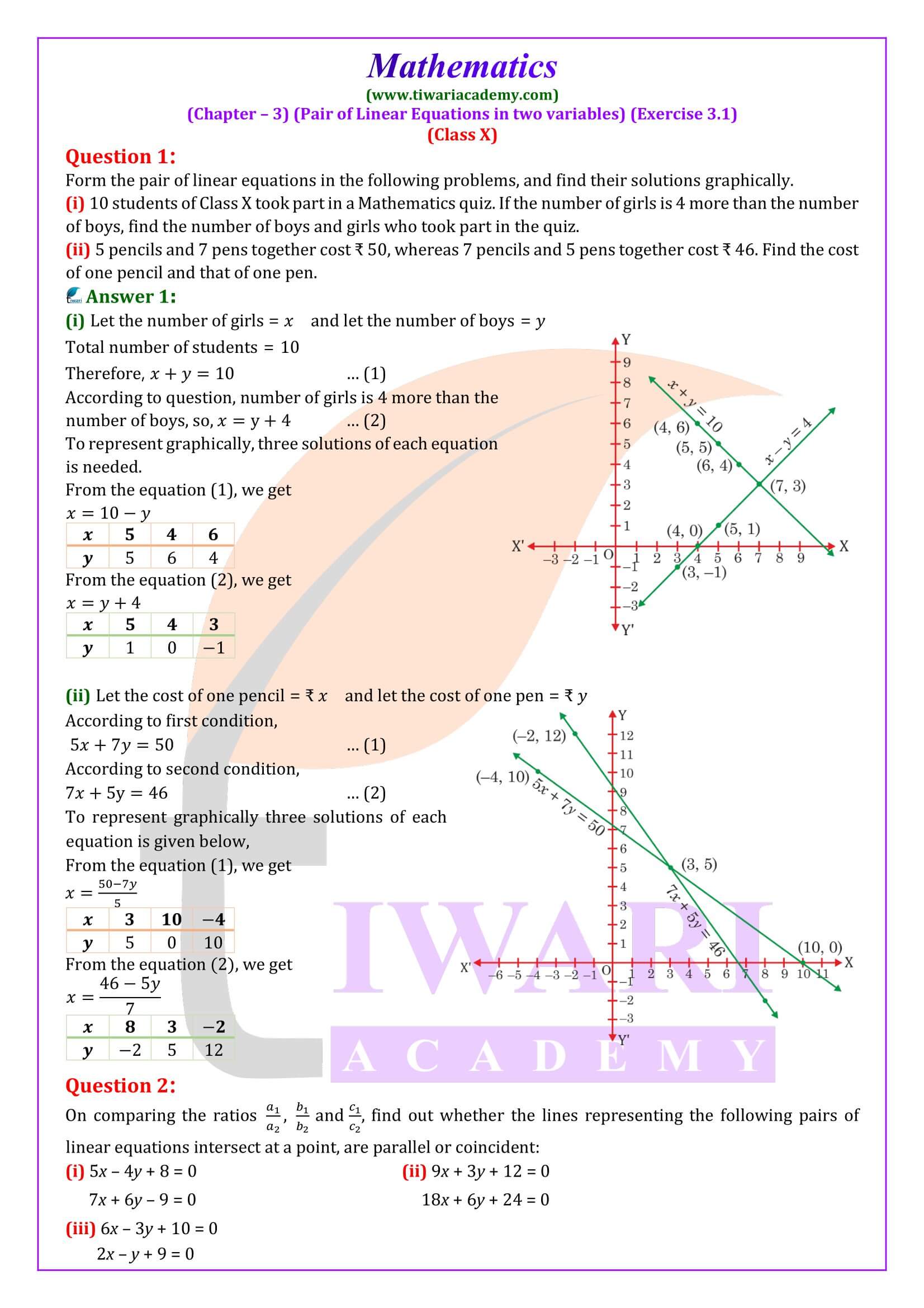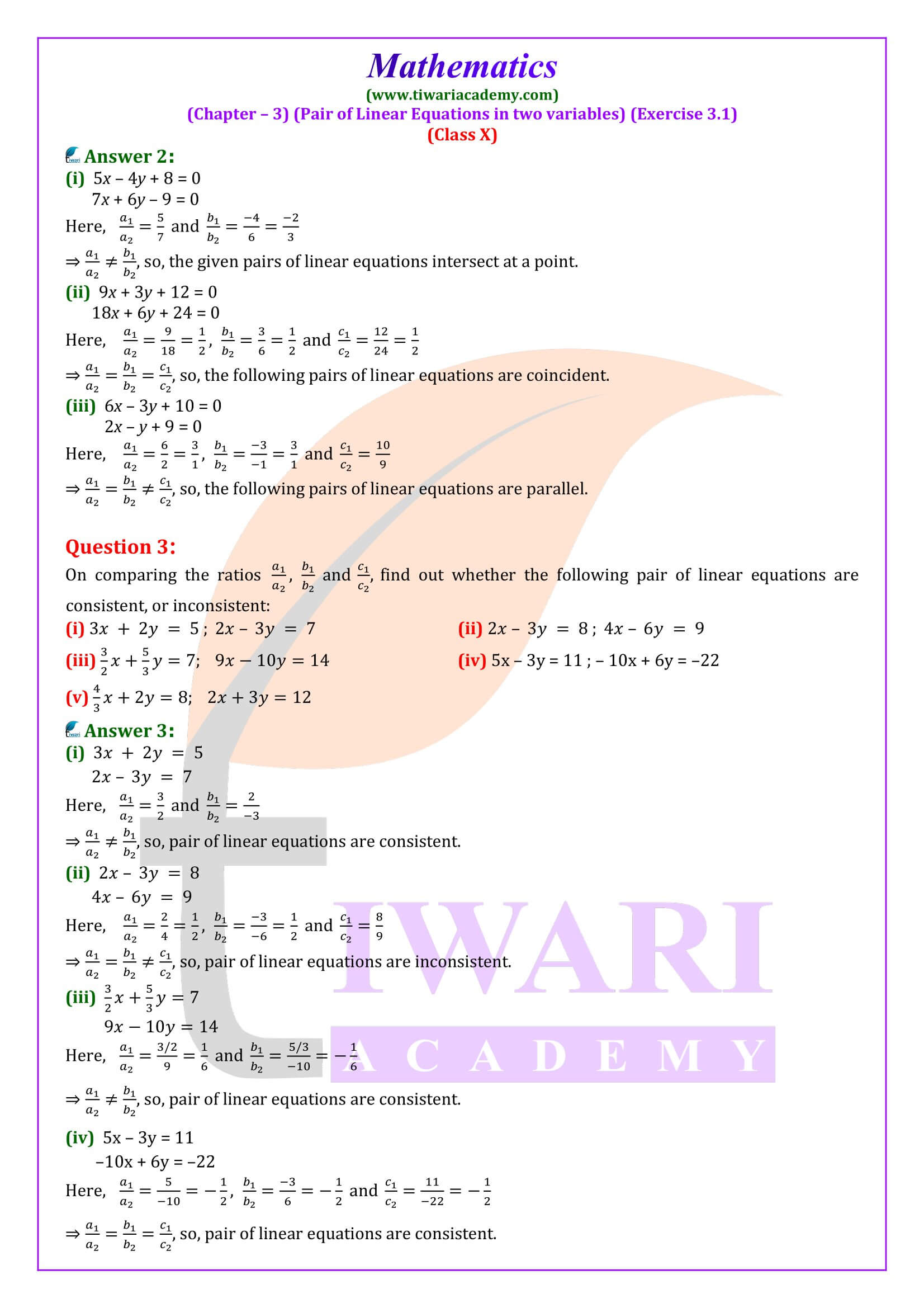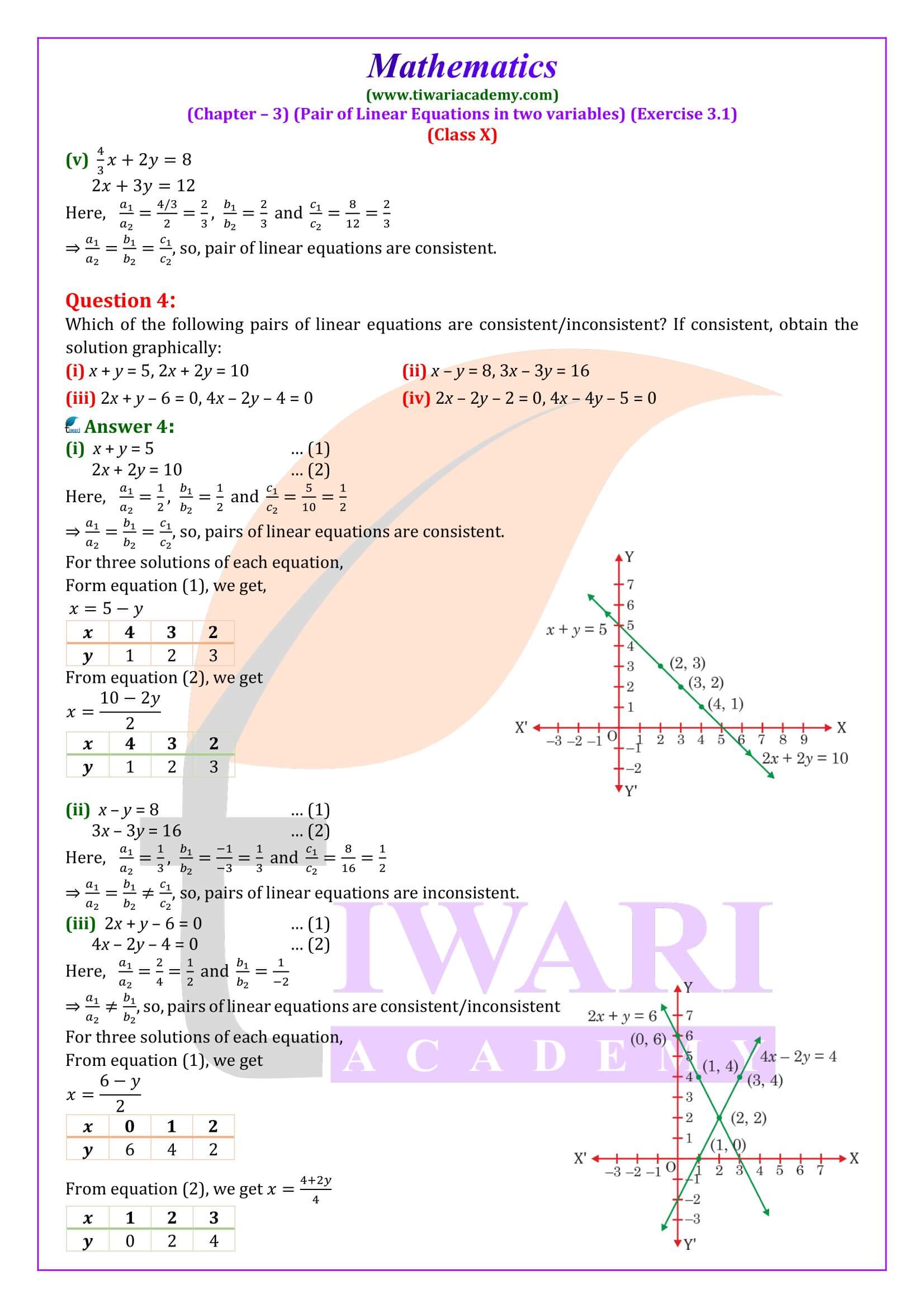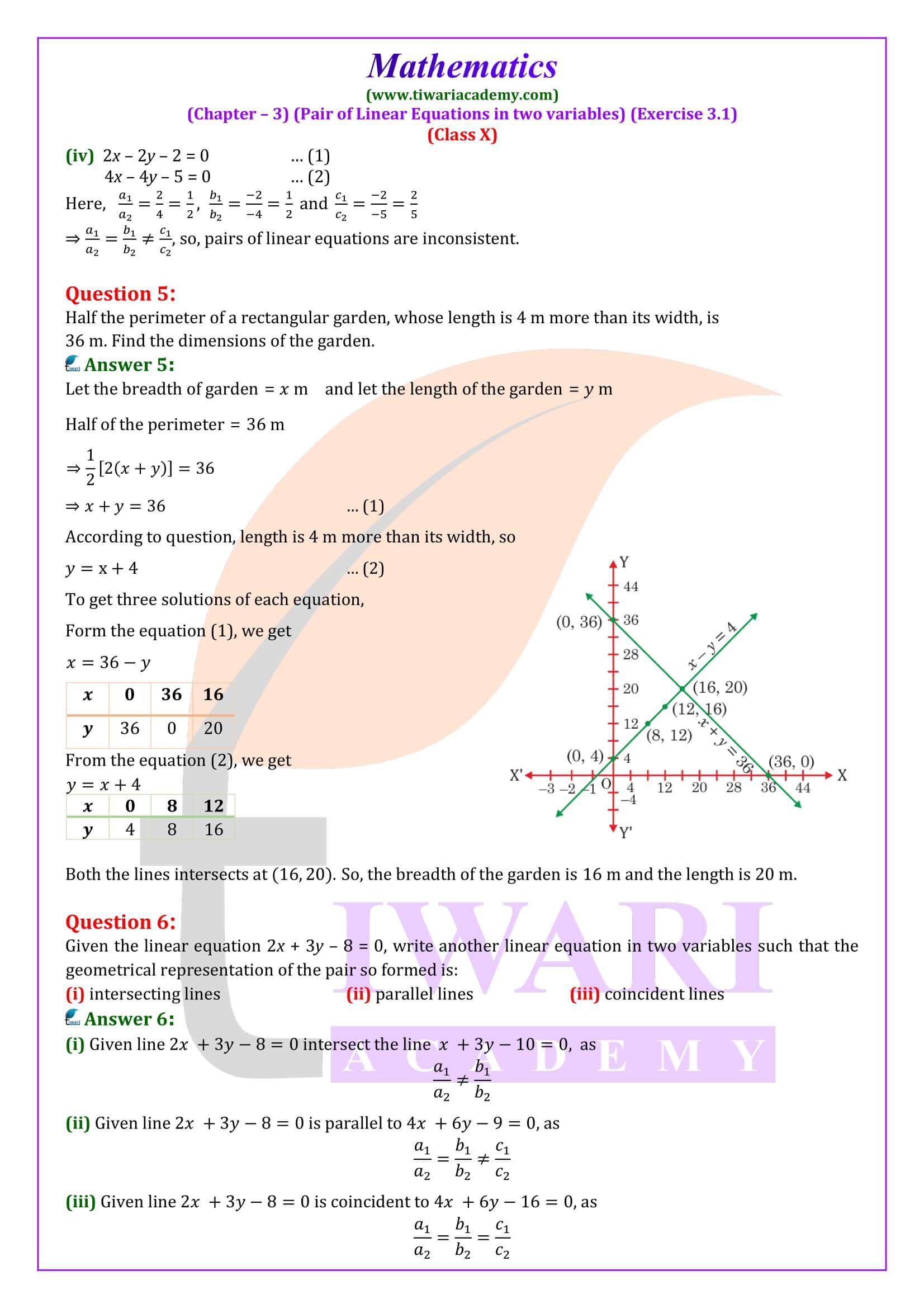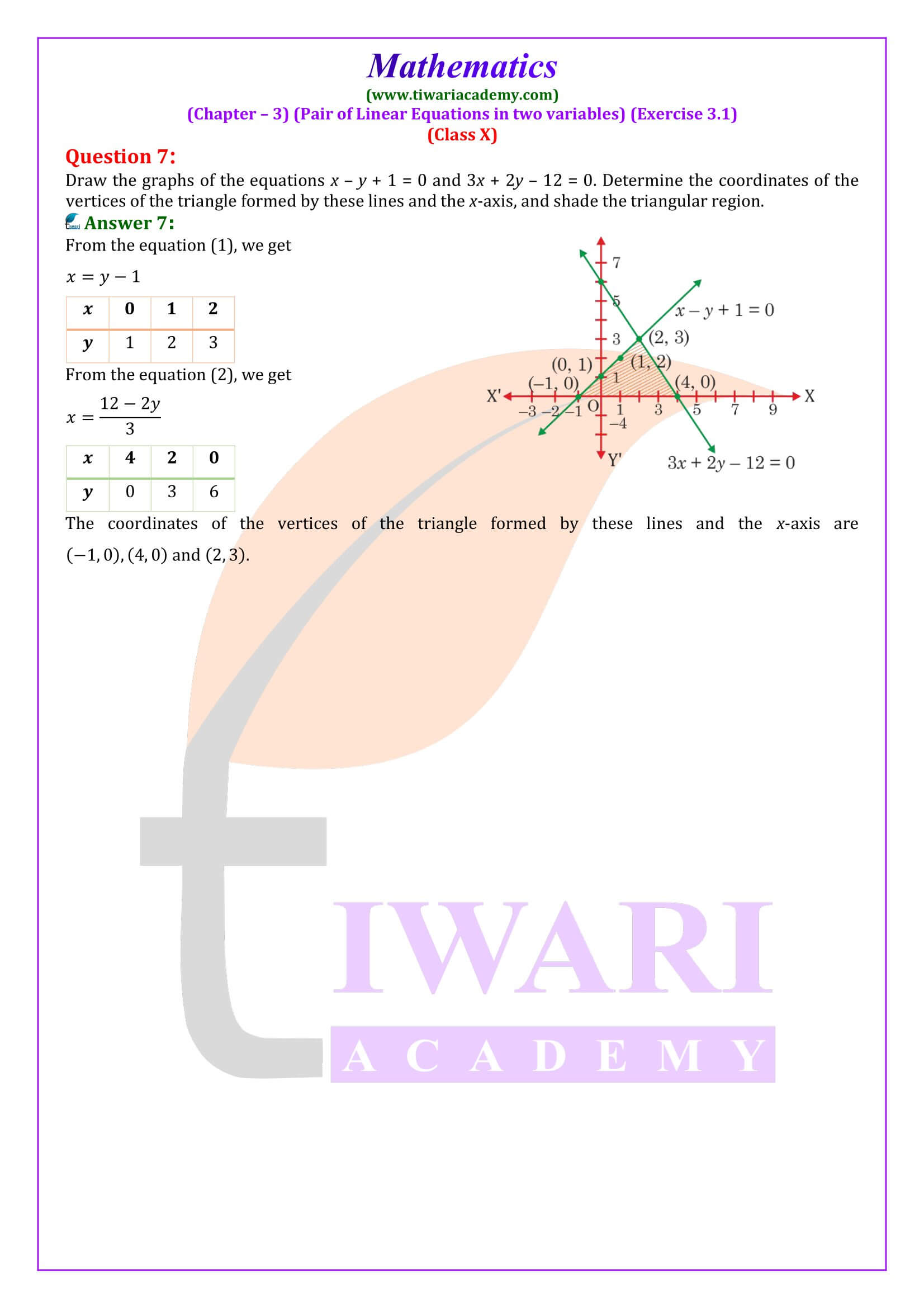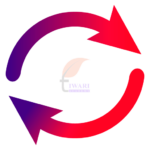NCERT Solutions for Class 10 Maths Chapter 3 Exercise 3.1 Updated for New Session 2025-26, Pair of Linear Equations in Two Variables with Hindi and English Medium. The solutions for Exercise 3.1 of Class 10 Maths Chapter 3 have been carefully revised as per the latest NCERT textbooks issued for the 2025-26 board examinations. Available in both Hindi and English medium, these updated solutions are designed to meet the needs of all students. Each question is solved with detailed steps and clear reasoning, helping students understand the basic concepts of linear equations in two variables. The modified explanations follow the new syllabus pattern, making it easier for students to grasp the graphical method of solution and build a strong foundation for higher-level problem-solving.
NCERT Exercise 3.1 Solutions Class 10 Maths
Class 10 Maths exercise 3.1 focuses on solving pairs of linear equations graphically. To prepare for this exercise, students should begin by mastering the basic concepts of plotting linear equations on a graph. Understanding how to find the points of intersection of two lines is very useful, as this intersection represents the solution. Practice solving problems where equations are given in various forms like standard form and slope-intercept form. Students should revise the conditions for consistency of solutions (i.e., when the lines intersect, coincide or are parallel) to easily identify whether a given pair of equations has one solution, no solution or infinite solutions.
| Class: 10 | Mathematics |
| Chapter 3: | Exercise 3.1 |
| Topic Name: | Linear Equations in two variables |
| Content Type: | Images, Text and Videos |
| Session: | Academic Year 2025-25 |
| Medium: | English and Hindi Medium |
Once students are comfortable with the graphical method, they should focus on speed and accuracy by working through sample problems under timed conditions. This will help build confidence for exam situations. Reviewing previous questions that have appeared in exams and practicing graphing equations with different levels of difficulty can significantly enhance the student’s ability to approach questions efficiently.
Important Questions 10th Maths Exercise 3.1
Romila went to a stationery shop and purchased 2 pencils and 3 erasers for Rs 9. Her friend Sonali saw the new variety of pencils and erasers with Romila, and she also bought 4 pencils and 6 erasers of the same kind for Rs 18. Represent this situation algebraically.
Let us denote the cost of 1 pencil by x and one eraser by y. Then the algebraic representation is given by the following equations:
2x + 3y = 9 …(1)
4x + 6y = 18 …(2)
If two linear equation in two variables are intersecting at one common point. How many solutions are their?
The common point on both the lines, there is one and only one solution for the pair of linear equations in two variables.
How many solutions are their for two parallel lines?
Parallel lines never intersect each other. So, there is no solutions for these system of linear equations.
If the graph of two linear equations are coincide, how many solutions are there?
If the lines are coincident, then every point on the line is the solutions for the equations. There are infinitely many solutions.
NCERT Exercise 3.1 Solutions for 10th Maths Chapter 3
10th Maths Ex. 3.1 solution pair of linear equations in two variables in Hindi Medium and English Medium. According to new curriculum, the syllabus for board exams is reduced. That is why many chapters and exercises are deleted from the textbooks published by NCERT. This page contains the solutions of 10th Maths exercise 3.1 given in new NCERT book.
Uttar Pradesh Board, Prayagraj also implemented NCERT Textbooks for their students, so these CBSE Solutions are useful UP Board students also. Get here the UP Board Solutions for class 10 Maths Chapter 3 Exercise 3.1 in Hindi Medium.
All the contents on Tiwari Academy are free. Download these solutions or View in Video Format free for CBSE board, Gujrat board and UP Board students using NCERT Books. Download Offline Apps of CBSE Solutions based on latest CBSE Syllabus.
NCERT Exercises Solutions for class 10 Maths Chapter 3 Exercise 3.1 in English medium and Hindi Medium are given here updated for all board. To download solutions visit at School Book Solutions for class 10 Maths Chapter 3 main page. Join the Discussion Forum to share your knowledge with the other users.
Important Questions on Class 10 Chapter 3 for Practice
- Find the value of k for which pair of linear equations 3x + 2y = –5 and x – ky = 2 has a unique solution. [Answer: k≠-2/3]
- Express y in terms of x in the expression 3x – 7y = 10. [Answer: y = (3x-10)/7]
- Find three consecutive numbers such that seven times the smallest number may be equal to three times the sum of the other two. [Answer: 9, 10, 11]
- If 2x + 5y = 4, write another linear equation, so that lines represented by the pair are coincident. [Answer: 4x+10y=8]
- Jamila sold a table and a chair for ₹1050, thereby making a profit of 10% on the table and 25% on the chair. If she had taken a profit of 25% on the table and 10% on the chair, she would have got ₹1065. Find the cost price of each. [Answer: Cost of table = ₹500, cost of chair = ₹400]
- Check whether the graph of the pair of linear equations x + 2y – 4 = 0 and 2x + 4y – 12 = 0 is intersecting lines or parallel lines. [Answer: parallel lines]
QUESTIONS FROM CBSE BOARD PAPERS
1. A number consists of three digits whose sum is 17. The middle are exceeds the sum of the other two by 1. If the digits be reversed, the number is diminished by 369. Find the number. [Answer: 692]
2. If the lines 3x + 2ky = 2 and 2x + 5y + 1 = 0 are parallel, then find value of k. [Answer: k=15/4]
3. After covering a distance of 30 km at a uniform speed, there is some defect in a train engine and therefore, its speed is reduced to 4/5 to its original speed. Consequently, the train reaches its destination late by 45 minutes. Had it happened after covering 18 km more, the train would have reached 9 minutes earlier than it did. Find the speed of the train and the length of the journey. [Answer: Speed = 30 km/h, length of journey = 120 km]
4. If we draw lines of x = 2 and y = 3 what kind of lines do we get? [Answer: intersecting lines]
5. A 90% acid solution is mixed with a 97% acid solution to obtain 21 litres of a 95% solution. Find the quantity of each of the solutions to get the resultant mixture. [Answer: 6 litres 90% solutions and 15 litres 97% solutions].
Download Offline Apps and ask your doubts in Discussion Forum. You can ask questions related to NIOS board or CBSE Board NCERT Books.
How many questions are there in Class 10 Maths Exercise 3.1?
There are in all 7 questions in exercise 3.1 of class 10th mathematics chapter 3 (Pair of linear equations in two variables) and all questions of this exercise are important.
How many examples are based on exercise 3.1 of class 10th mathematics?
Only 3 examples (examples 4, 5 and 6) are based on exercise 3.1 (chapter 3 Pair of linear equations in two variables) of class 10th mathematics and all three examples are important. Also all three examples are of different type.
Which questions of exercise 3.1 class 10th Maths can easily do?
Students can easily do few questions like Question 2, 3 and 4 of exercise 3.1 (chapter 3 Pair of linear equations in two variables) of class 10th mathematics.
Which questions of exercise 3.1 class 10th Math are difficult?
Students find Q 1, 5, 6 and 7 of exercise 3.1 (chapter 3 Pair of linear equations in two variables) of class 10th mathematics difficult. These questions need more practice to learn better.
